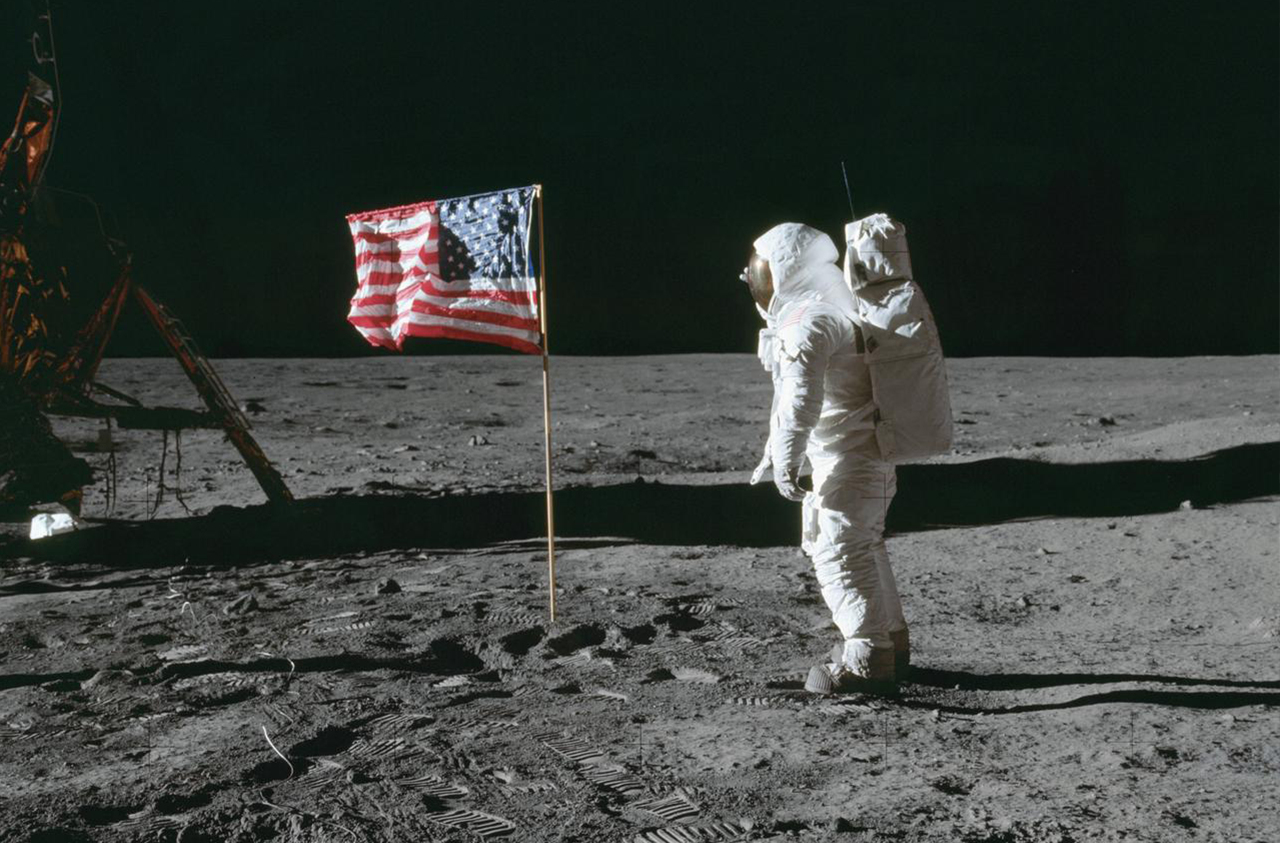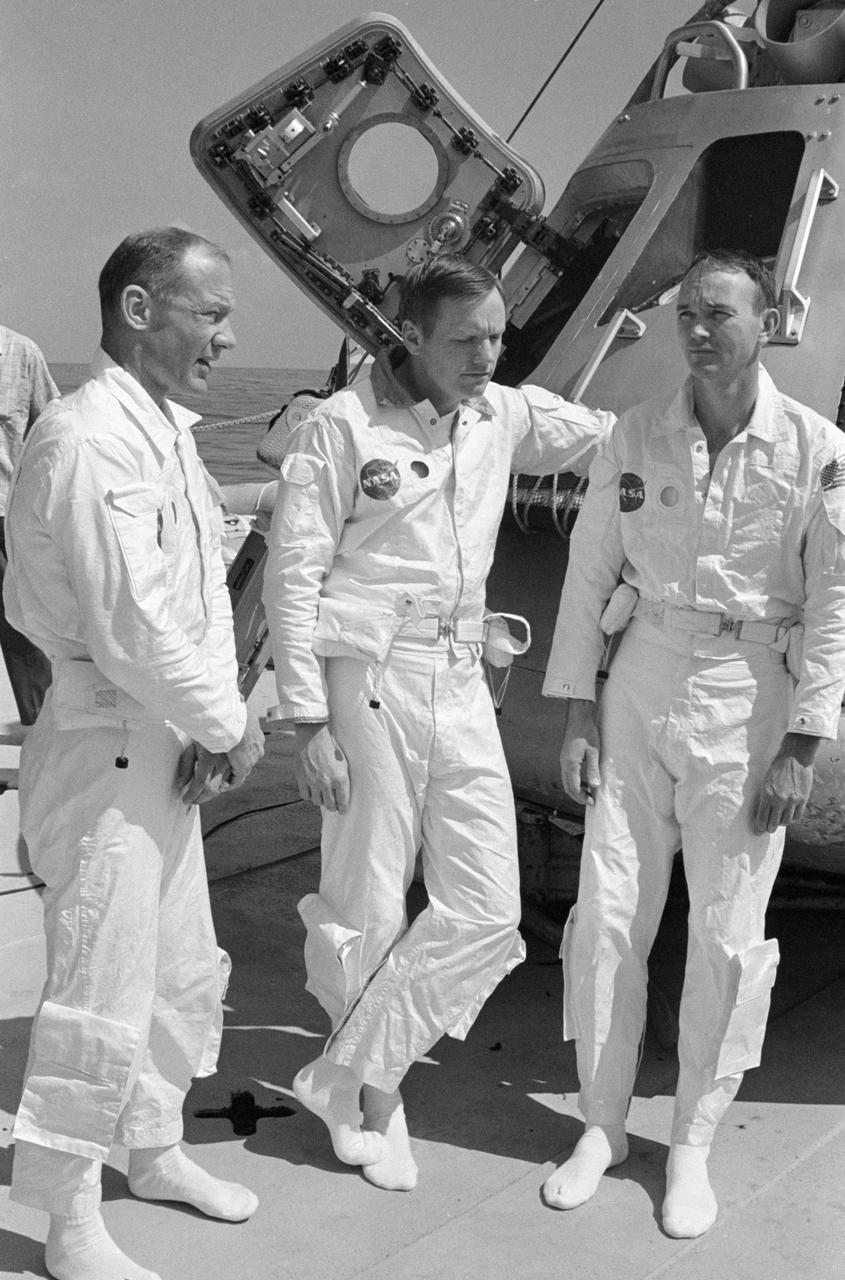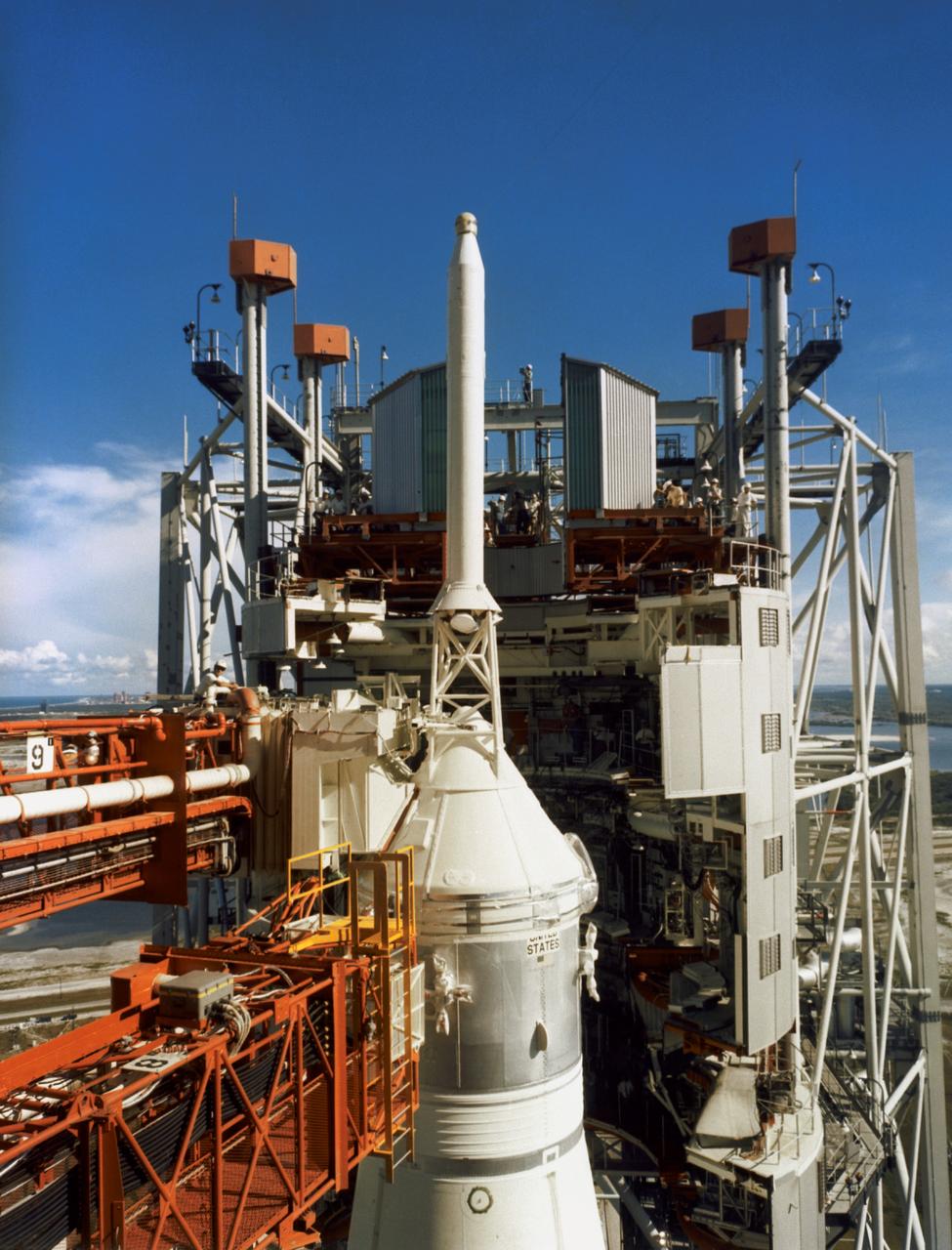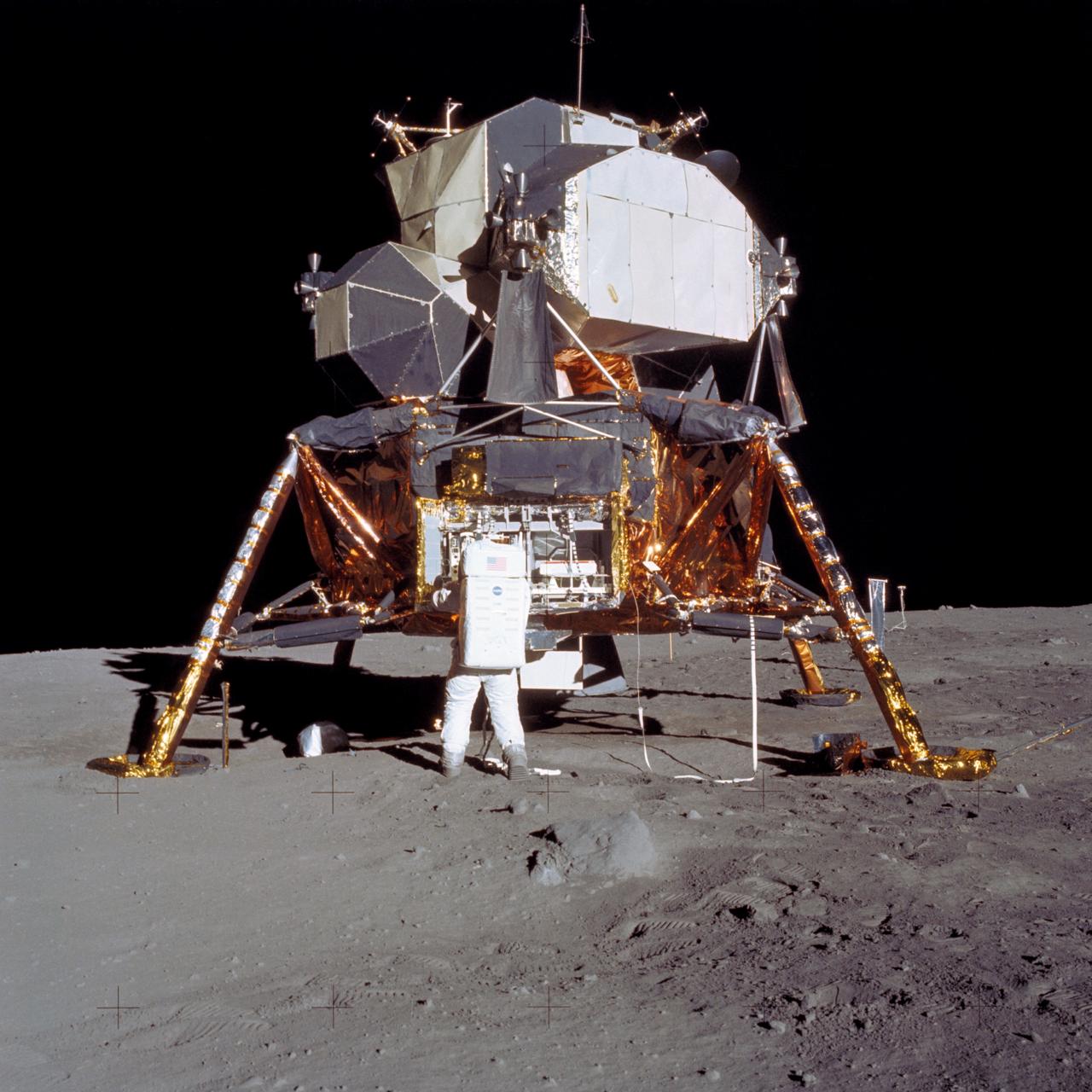 On the 49th anniversary of Apollo 11’s Moon landing, let’s tell the story of how these three intrepid explorers got there.
On the 49th anniversary of Apollo 11’s Moon landing, let’s tell the story of how these three intrepid explorers got there.
On July 16, 1969, Apollo 11 blasted off atop a Saturn V rocket. The trip to the Moon took four days. After spending about 36 hours on the surface of the Moon, Neil Armstrong and Edwin “Buzz” Aldrin lifted off in the Lunar Module, rendezvoused with Michael Collins in the Command Module and headed back to Earth. Four days later, the mission splashed down successfully in the Pacific Ocean.
How did each of those astronauts get there, though? How did the Apollo Program progress to successfully land this mission on the Moon? As in most stories, progress came in inches but got them there on time.
The Astronauts

Armstrong was the first of the group to be selected as an astronaut. A graduate of Purdue University, Armstrong was an accomplished test pilot who was considered fro the Air Force’s Man in Space program before NASA took over the space race. He was eventually selected as part of the second astronaut class, the New Nine, along with future Apollo alums Frank Borman, Pete Conrad, Jim Lovell, Tom Stafford, Ed White, James McDivitt and John Young. This group was announced in 1962, a year after Alan Shepard became the first American in space.
Aldrin and Collins were part of the third astronaut class, selected in 1963. Collins joined classmate Bill Anders as the first astronauts born outside the United States; Collins was born in Rome while Anders was born in British Hong Kong.
Collins attended West Point and graduated in 1952 with fellow astronaut Ed White, though Collins went into the Air Force after graduation. He was also a test pilot, as many early astronauts were, and had applied to be part of the second group of astronauts with Armstrong, but was denied. Instead, he participated in an Air Force project flying F-104 Starfighters before being picked to be in the third class.
Aldrin also went to West Point and graduated in 1951, going into the Air Force. He flew 66 combat missions during the Korean War and then earned his doctorate from MIT in 1963 on orbital docking. He was selected as an astronaut 10 months later.
All three Apollo 11 astronauts flew Gemini missions, but none flew in the four Apollo missions to go to the Moon before their lunar landing. Collins trained to be on Apollo 9, but a back issue forced him to be scrubbed from that mission. Instead, Collins served as capsule communicator (CAPCOM) for Apollo 8.
The Apollo Program

The Apollo Program itself moved at a startling pace. After President John F. Kennedy gave his famous moon speech at Rice University on Sept. 12, 1962, things proceeded quickly. Less than seven years later, NASA fulfilled Kennedy’s vision. In between, they developed technology at a startling rate.
NASA had already sent a person into space when Alan Shepard went up on Freedom 7 in 1961. John Glenn provided the next step, orbiting the Earth three times in 1962 in Friendship 7.
After that, seven more Mercury missions flew, ending with a 36-hour mission in Faith 7 in 1963. The two-person Gemini missions followed quickly behind, laying the groundwork for astronauts moving outside their space capsule, as in Ed White’s first EVA in Gemini IV. Gemini V was a landmark for Apollo because it showed astronauts could survive in space for eight days, the length of time needed to make it to the Moon and back.
Gemini 8 demonstrated space docking was possible, which proved crucial to the Apollo-Lunar Module configuration necessary to land crew on the Moon. NASA decided to not power the entire flight to the Moon from the launch vehicle, or rocket, itself. Instead, they used a lunar orbit rendezvous vehicle to power the trip to the Moon. Gemini 8 showed the viability of that plan as well.
Those missions took place between 1965 and 1966. The final Gemini mission flew in November 1966, but the first Apollo mission didn’t follow nearly as closely.
That was thanks to the tragedy of Apollo 1, where astronauts Ed White, Roger Chaffee and Gus Grissom died in a fire when testing the Apollo capsule. Work was shut down for 18 months while NASA grappled with their mistakes and found solutions to the design problems in the Apollo craft. “Risk is the price of progress,” legendary Apollo era flight director Gene Kranz said. Kranz could still clearly remember the sounds of the three astronauts as they died in the fire. It galvanized him and the rest of the Apollo crew to avoid the mistakes of the past.
Setting the Stage
The Apollo 1 fire took place Jan. 27, 1967, delaying crewed flights until October 1968 with Apollo 8. By that time, NASA had tested three uncrewed capsules and lunar modules and developed the launch vehicle from Little Joe II to Saturn I to Saturn IB and finally Saturn V. The force difference went from 105,000 pounds of thrust in the first stage to Saturn V’s 7.9 million pounds of thrust. That exponential growth proved vital to getting Apollo 11 to Tranquility Base.
Still, plenty of groundwork had to be laid with crewed missions before Apollo 11 landed. Each Apollo mission from 8 through 10 added another element to the story. Apollo 8 orbited the Moon successfully. Apollo 9 connected the Command Module with the Lunar Module and demonstrated that the Lunar Module could support astronauts while on the Moon. Apollo 10 was the dress run for the lunar landing, going so far as to get astronauts Tom Stafford and John Young into the Lunar Module, descending within four miles of the Moon before turning around.
The Landing

That set the stage for Apollo 11’s launch and eventual landing on the Moon July 20, 1969. Even that wasn’t a smooth move. The Lunar Module overshot the landing site, meaning Armstrong only had minutes of fuel remaining in the Lunar Module when he touched down on the lunar surface.
Armstrong’s famous words, “Houston, the Eagle has landed,” are said to be the first words spoken from the Moon, but Aldrin disputes this jokingly. His first words spoken back to Mission Control were “Contact Light!” after the Lunar Module touched down. Of course, Armstrong’s were much more memorable as the historic moment was broadcast to the nation.
The two spent about a day on the lunar surface while Collins orbited the Moon alone. The trio linked up again on July 21 and headed back to Earth. On July 24, Apollo 11 entered Earth’s atmosphere and landed safely in the Pacific Ocean just before dawn local time. The three astronauts were collected by the USS Hornet, meeting President Richard Nixon from quarantine. After three weeks, the three finally were released and met a heroes reception with parades, a State Dinner and being awarded the Presidential Medal of Freedom.
Five more missions successfully made it to the Moon and back, but Armstrong’s small steps will always ring out through history.








